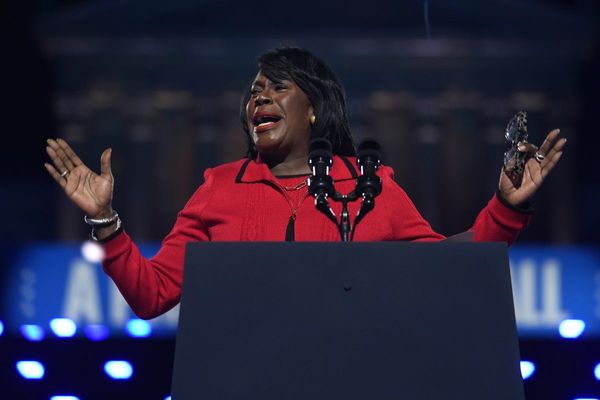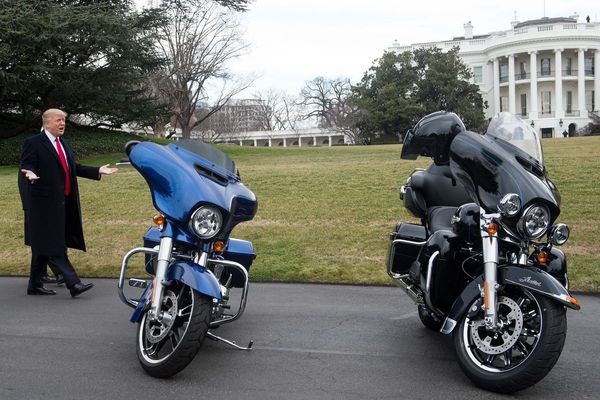It was all so simple – the Scout was my favourite Indian bike in the entire universe, including Planet Zog.
And now the American company’s gone and brought out the FTR 1200, and made everything so much more complicated.
Mind you, I should have been expecting it.
FTR stands for Flat Tracker, and in the 1940s and 50s, Indian dominated flat-track racing, or what we’d call speedway, racing around an oval dirt track while demonstrating in extremis the art of counter-steering.
So when Polaris bought the Indian name in 2011, a flat tracker was always on the horizon, and one finally appeared in the shape of the FTR 750, which dominated the US flat-track season on its debut in 2017, and in 2018 won 17 out of 18 races.
Indian brought that bike to the launch of the FTR 1200 in Los Angeles and so closely did it pay homage to its ancestors that when I walked into the presentation room, I thought for a moment it was an immaculately restored 50s machine.
Beside it sat the FTR 1200 and, even sitting still, it was obvious it meant business, looking muscular and hunkered down, ready to sprint from the blocks.
The looks are slightly schizophrenic – beautifully retro from the side, but with the LED headlight, completely contemporary from the front.
That impression was confirmed climbing on board, with the riding position pitching you forward to the wide bars more aggressively than the laid-back and feet-forward seating of the Scout.
The standard model has a simple analogue speedo with a small digital information panel, but the S model we were riding comes with a snazzy TFT touchscreen, which has Bluetooth and USB connectivity for phone calls or music and a choice of 18 languages.
Impressive and, at 4.3in, not too big to jar with the overall retro look of the bike.
The standard model has straight line ABS and traction control, and adjustable rear suspension, while the S also has stability control which works when cornering and adjustable front and rear suspension, more of which later.
Ride off, even in Standard riding mode, and it’s immediately obvious that this is a much more aggressive beast than the Scout, with 123bhp compared to the Scout’s 100, and a dry weight of 222kg compared to the Scout’s 246kg.
With the fuel tank under the seat both for mass centralisation and a low centre of gravity, I expected handling to be fabulous, but at first found it slightly light and floaty in the tight mountain twisties above LA.
However, I suspected that it was the usual problem – that at 103kg compared to the average Indian test rider’s weight of 5kg including a packed lunch, I was weighing down the back and making the front end light.
At the first coffee stop, one of the Indian tech guys firmed up the rear preload several clicks and the difference was huge, with the bike now carving through bends with the precision of a surgeon’s scalpel. Except without all the blood.
The braking, with Brembos all round and two big discs up front, was superb, with a power-assisted slipper clutch stopping any chance of the back wheel locking during over-enthusiastic downshifting on the way into corners.
There. That sorted, it was time to switch from Standard riding mode to Sport, and now the bike’s aggression took on a harder edge – not scarily so, but just supremely satisfying as I powered out of bends with a visceral snarl from the twin exhausts or bombed past unsuspecting cars given even half a chance between bends.
Only two small complaints: Slightly snatchy fuelling on a closed throttle between 4,000 and 5,000rpm, and a slight vibeyness at the same revs which gave my nether regions a disturbing tingling sensation.
Mind you, some people pay good money for that sort of thing.
But here’s the weirdest thing of all – while I only rode the S version, two other journalists got their hands on the couple of standard models available, and both said it was significantly better than the S, with less aggressive throttle response, better fuelling and plusher suspension than the S.
The standard model’s analogue speedo also sits slightly better with the retro look of the bike than the albeit unobtrusive TFT screen.
Even more remarkable, MCN’s Michael Neeves, a racer and one of the quickest road riders out there, preferred the Standard rider mode setting on the S because he found Sport mode too aggressive. He also thought it could benefit from better tyres.
So ride both and you could save yourself over a grand.
Did I prefer it to the Scout? Not quite. It’s certainly got more grunt, but I prefer the Scout’s more classical looks, especially the exquisite cream and burgundy speedo.
But then, it’s pretty good news for Indian if the FTR 1200’s main rival for my affections is another Indian.
The Facts
Price: Standard from £11,899, S from £12,999
Engine: 1203cc liquid-cooled V-twin
Power: 123bhp @ 8,250rpm
Torque: 87 lb ft @ 5,900rpm
Colours: Black; red/grey; grey/black
Geoff’s kit: Jacket, Richa Bonneville; helmet Shark Evo-One, trousers Belstaff, boots Alt-berg.







